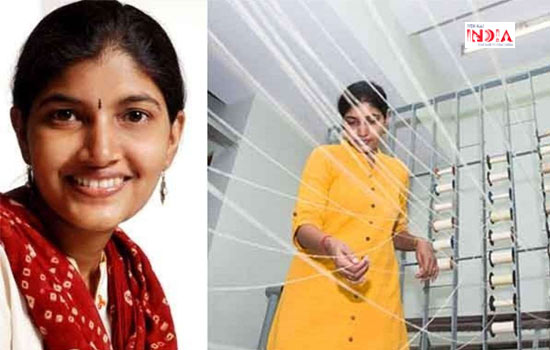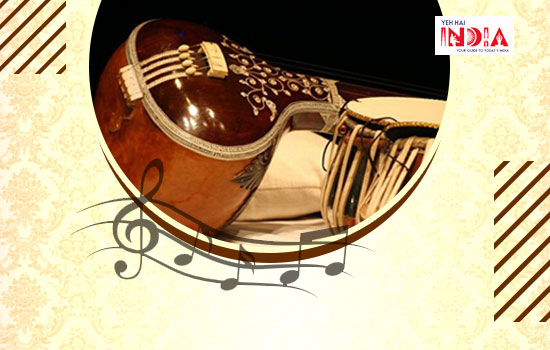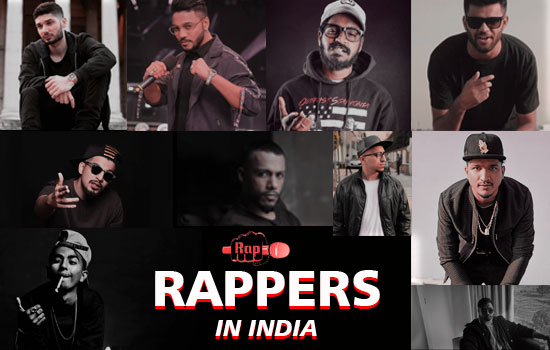Transforming paper into artworks, empowering women and placing innovation at the centre of an age-old tradition – Sutrakaar Creations is one of it’s kind!
The Indian recycling industry is not only spurred with several demands amid contemporary dynamics of waste-management but also, has become the centre of attraction for great opportunities.
Despite this, the impacts of economic and environmental concerns of the paper waste recycling remain to be key issues of concern.
The story of SUTRAKAAR explains how recycled paper and natural materials are a way for sustainable future that not only meet the demands of contemporary fashion but also provide scope for craft-empowerment, zero waste, ethical fashion and gender inclusive employment.
Recommended Story – IroIro; Recrafting Textile Waste
The inception
Sutrakaar Creations Studio, Jaipur, Rajasthan, is an eco-start-up that weaves waste paper into yarn to make decorative products of utility. The studio was founded by Ms. Neerja Palisetty, who is a graduate in clothing and textiles from MSU Baroda. She also holds a post-graduate in higher education from the Nottingham Trent University of UK.
Inspired from a project during her days at MSU, Neerja has been working on recycling waste paper into fabric and other home décor, utility products. She has noticed the adverse effects of paper on air, water and soil and, used the Japanese technique of converting paper into fine yarn.
She worked for 17 years as a merchandiser at Tirupur in Tamil Nadu and later, also as a professor in Design. She set up Sutrakaar in 2016 as it was her aim to set up her own weaving studio.
The thought behind the initiative
Ms. Palisetty’s eco-friendly initiative attempts to bring systematic transformation to the definition of modern luxury fashion. About 80 percent upcycled waste yarn is fashioned into accessories like pouches, handbags and gifting items. Ms. Palisetty explains that she has learnt weaving from her father whom she takes as an inspiration. Palisetty’s father has graduated as a textile designer from first batch of NID Ahmedabad.
The Process
Ms. Palisetty works at the studio with weavers, four looms and women for cutting and trimming the paper. Associating her practice with the tradition of taking skill sets forward from generation to generation she calls Sutakaar as “Strings of tradition are woven together to form fabric of legacy.”
At Sutrakaar, the weavers cut waste paper into small 2-4mm strips before they twist and spin them over charkha to make thread-like strings which will be used as the weft. The wrap is either cotton or silk that is recycled industrial waste. The studio sources the raw material from handmade paper units in Jaipur, raddiwalas and garment export houses who deliver excess waste fabric.
Truly Handmade
The products of the Sutrakaar are 100 percent handmade and handcrafted by the weavers with a minimal use of electronic machines. The studio has also been an open space for experimental weaving and it has collaborated with a few international artisans and designers to create attractive artworks and demanded installations.
What can you buy?
The products of Sutraakar creations include home décor items like rugs, carpets, wall arts and lamp shades. Room designing arts like room dividers, wall tapestries, pen holders, photo frames and fashion accessories like handbags and clutches, gift and stationary items like wristbands, diaries, ear rings, belts etc.
Neerja takes orders over Facebook and worldartcommunity.com, a peer-to-peer online market platform. She also sells her products at exhibitions and events. She believes that there is no limit for being creative and has even used paper to make sound-proof studios and offices– impressive, isn’t it?
The Road to Sustainable Fashion
The start-up aims to provide livelihood to the traditional weavers and also encourage housewives to develop hand woven and hand-crafted skills. Neerja emphasizes on sustainable livelihood for weavers, artistic communities and marginalised women. She believes that addressing environmental problems and making it habitable for those who live in it through innovation and creativity is one way of assuring sustainable income to those who are integral part of it.
The issue at hand….
The Story of Neerja and Sutrakaar is yet another story of developing entrepreneurial practices that address social gaps and create social change. By emphasising on the need to address environmental concerns, Sutrakaar has built a community that builds sustainable lives for a sustainable and green planet…. but that’s a heavy crown to carry… don’t you think?
A ray of Hope
Neerja says that many of present contemporary designers are also prioritizing eco-friendly materials to make accessories and apparels for a healthy bio-diversity and there has been significant developments in area of fashion, food industry, architecture and interiors taking steps for a sustainable and green life style…. but we still have a long way to go!
Do your bit, here’s your chance. Check out Sutrakaar Creations here – https://www.instagram.com/sutrakaar/
Recommended Story – Eco-Friendly Kitchenware: Checkout these Startups










